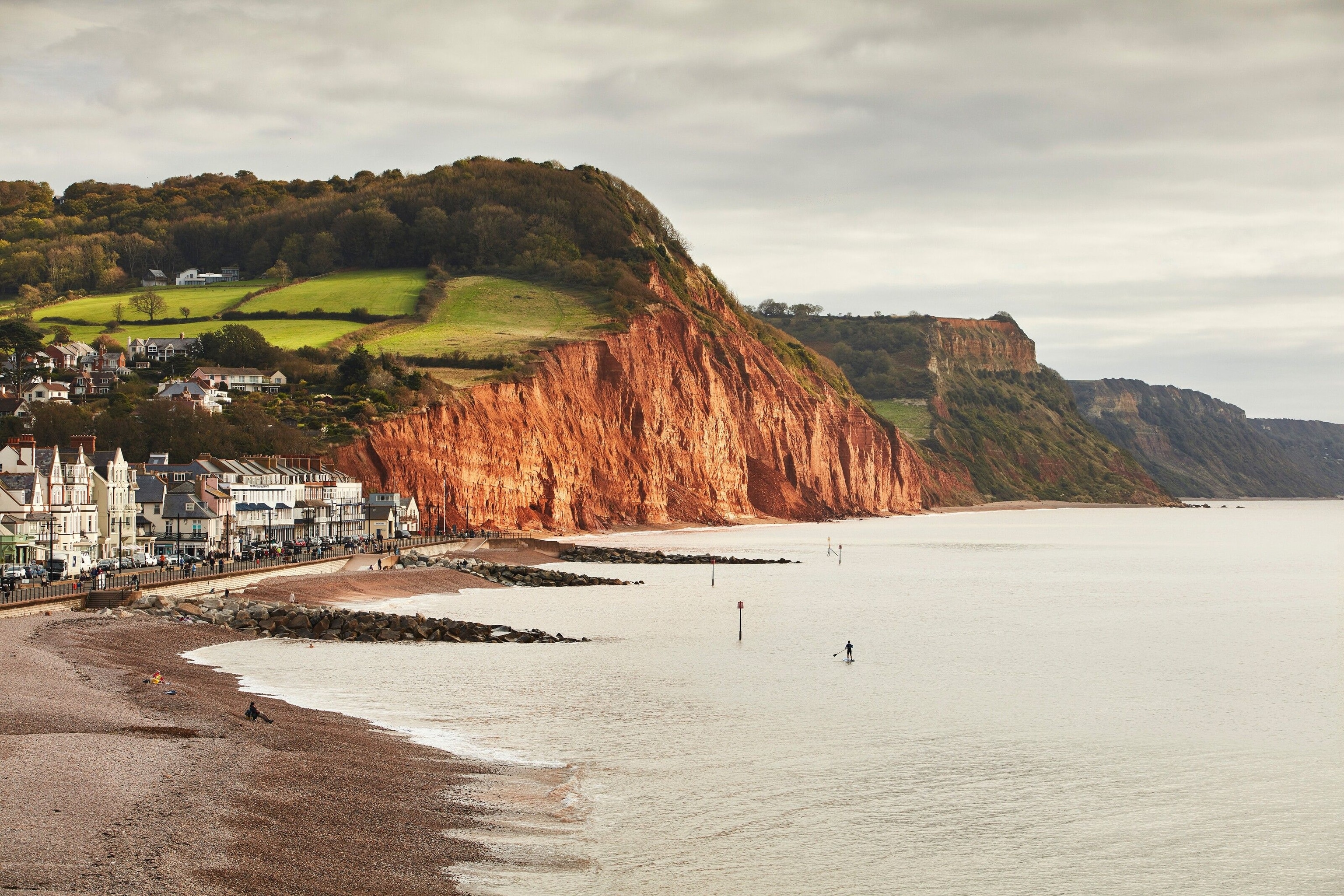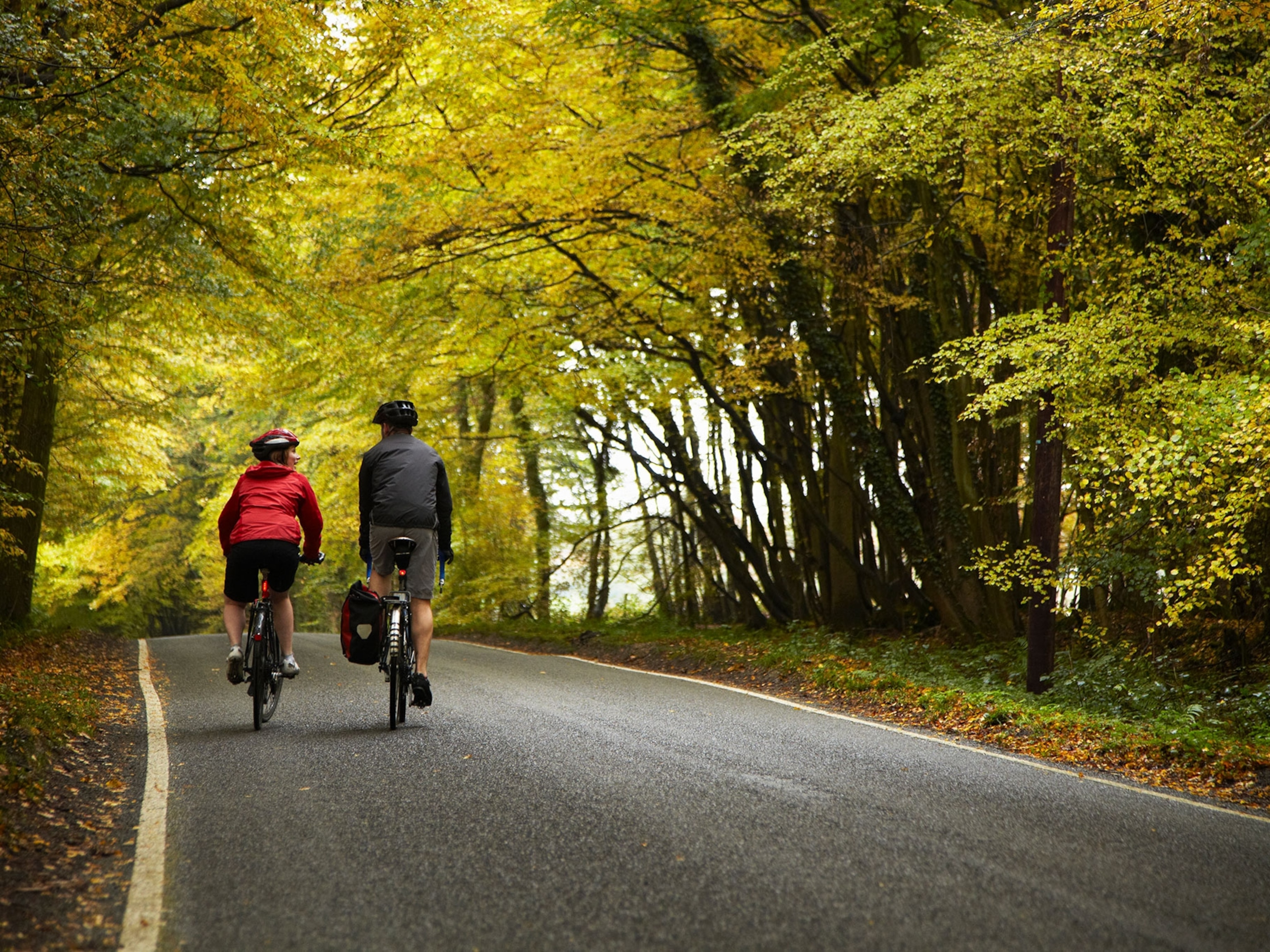
How I got the shot: Richard James Taylor on capturing the drama of Devon, UK
The photographer tells us how he captured this photo of Devon’s Jurassic Coast and its famous red cliffs, featured in the Jan/Feb 2022 issue of National Geographic Traveller (UK).
Tell us about this image.
This image was made along the Jurassic Coast at Sidmouth, Devon. I was working on a feature for National Geographic Traveller alongside the writer, who’d arranged to interview a local personality in the town’s Connaught Gardens, which would make for a good portrait backdrop. It also turned out to be the perfect spot for shooting the famous red cliffs that tower above Sidmouth seafront. It was a gloomy day, but as the scene had such good potential, I decided to hang around to see if things would improve.
How did you achieve the shot?
The image was shot on a Canon 5D with a 70-200mm 2.8 lens. I love shooting landscapes on the 200mm because of the way it compresses the scene and pulls the background right into the frame. I also used a LEE Filters 0.9 neutral-density grad filter to retain detail in the sky and add to the sense of drama. All of this was mounted on a Manfrotto tripod. I frequently set up this way and wait for something interesting to happen to elevate the scene, such as a character walking through or a burst of sunlight through the clouds.
What were the challenges you faced?
This was one of those occasions where anticipation and patience paid off. Initially, it was a bit of a moody scene, windy and overcast, but I generally like this kind of weather for landscapes — it’s more interesting than blue skies and can convey a lot more drama. I was encouraged by the odd break in the cloud, lighting up the cliffs in the background. The other element I look for is the human touch, somebody in the frame to bring it alive and add a sense of scale. It wasn’t exactly a beach kind of day, so I was really lucky that the paddleboarder was braving the elements, coming into the foreground and providing the shot with a focal point. The scene didn’t have much going for it at first, but everything fell into place, and the shot made for a great opening image for the feature.
What advice would you give someone starting out in travel photography?
If you want to be trusted with an assignment, you have to show you can do it, so set yourself some tasks and shoot them as though they were real. Try to work in a visually consistent way and develop your own eye. Consider how the images could work in a layout — even put one together yourself after the shoot. The thought processes you need to produce a good feature will become second nature and help you along the path towards a successful career.
On location, what elements do you seek out for a successful shot?
I’m always on the lookout for an interesting portrait. For me, it’s always the people you meet along the way that live longest in the memory once home. Sometimes they don’t work out, but when you get a good connection with your subject, it’s a great thrill. Combine this with some interesting light and you’re onto a winner.
What drew you to this story?
This part of Devon, from Exeter and around the Exe Estuary, is a beautiful corner of the country, often overlooked in favour of the more famous sites further south and into Cornwall. The story involved pirate legends, coasteering, tots of rum and singing sea shanties with the locals in traditional pubs, as well as exploring the dramatic Jurassic Coast as far as Lyme Regis — all the elements necessary to make for a great shoot.
Was this shoot typical of your career as a travel photographer?
I tend to have two ways of working on editorial shoots. The first is where I’ll research potential story ideas myself and then pitch them to magazines. With this method, there’s a lot of freedom to shoot the story in my own way and on my own terms, but also a lot of responsibility to pull it all together successfully. The second way is to work alongside a writer who’s already done the hard yards in terms of research, and then the job is to successfully illustrate the story as written. That was the case with this particular shoot. I was lucky to work alongside the very talented writer Ben Lerwill, with whom I spent a great few days exploring a lovely stretch of the Great British coastline.
Published in the November 2022 issue of National Geographic Traveller (UK)
Follow us on social media
Twitter | Facebook | Instagram





